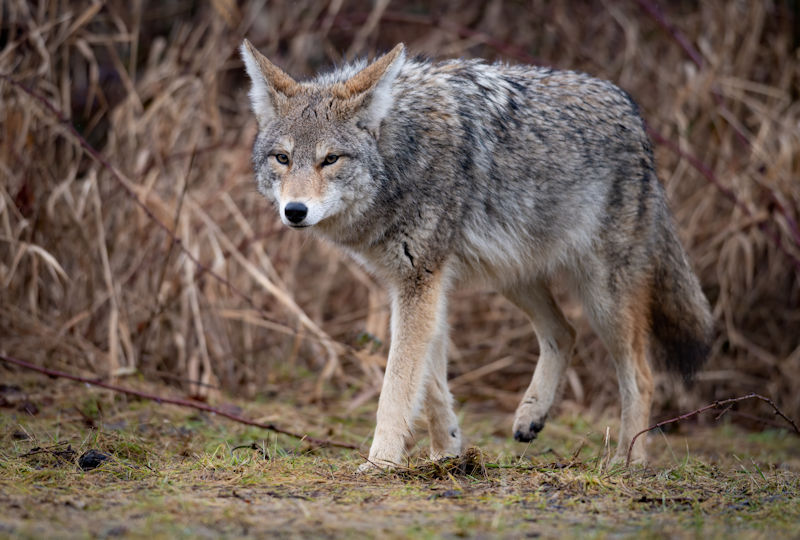In a chilling revelation, the Charles County Department of Health recently announced that a coyote, collected on December 2, 2023, in the Charter Oak/Scarlett Oak vicinity, has tested positive for rabies. Adding to the urgency, another coyote with a similar description was sighted around 10:00 am in the 13000 block of Ballantrae Lane in Waldorf, MD. This alarming development underscores the immediate dangers posed by rabies to both pets and people. As we delve into the intricacies of this public health concern, it’s essential to explore the value of trapping as a beneficial tool in controlling furbearers. Furthermore, we’ll investigate the impact of habitat loss around the Waldorf area and its contribution to the escalating wildlife-related issues.
The Dangers of Rabies: A Threat to Pets and People
Rabies, a viral disease affecting the central nervous system, is not to be taken lightly. The recent positive test in a coyote raises the stakes, emphasizing the need for community awareness and preparedness. The primary concern lies in the potential threat to pets, with domestic animals susceptible to contracting the virus through contact with infected wildlife.
Dogs and cats, being common companions in households, are at risk of exposure, and the consequences can be severe. Rabies symptoms in pets range from behavioral changes and aggression to difficulties in swallowing and paralysis. With untreated rabies often proving fatal in animals, responsible pet ownership becomes paramount. This includes keeping pets indoors or supervised when outside, ensuring up-to-date vaccinations, and seeking prompt medical attention in case of bites or suspicious behavior.
Equally alarming is the threat posed to human health. Rabies is also a zoonotic disease, meaning it can be transmitted from animals to humans. While human rabies cases are relatively rare, the severity of the disease cannot be overstated. Once symptoms appear, the disease is almost universally fatal. Therefore, any potential exposure to rabies, such as a bite from a potentially infected animal, requires immediate medical attention.
Trapping as a Beneficial Tool in Wildlife Management
In the face of such risks, it becomes crucial to explore effective methods of wildlife management. Trapping, when carried out responsibly and ethically, emerges as a valuable tool. It allows for the targeted control of furbearers, addressing specific challenges posed by wildlife populations, particularly in suburban and urban settings.
Proponents of trapping argue that it is a humane and effective means of managing wildlife populations. By selectively targeting problematic individuals or populations, trapping offers a controlled and monitored approach to reducing potential rabies vectors. Responsible trapping also ensures that non-target species are not adversely affected, minimizing the impact on the broader ecosystem.
However, it’s essential to approach trapping with a nuanced perspective. Humane trapping methods that prioritize the welfare of captured animals should be employed. Rigorous adherence to local regulations and ethical guidelines is imperative to maintain the delicate balance between addressing public safety concerns and respecting the well-being of wildlife.
Habitat Loss and Its Contribution to Wildlife-related Issues
As we grapple with the threat of rabies in the Waldorf area, it’s crucial to address the broader context of habitat loss. The encroachment of urban and suburban developments into natural habitats can disrupt ecosystems, leading to increased human-wildlife interactions and potential conflicts.
Loss of habitat around the Waldorf area may contribute to the challenges posed by wildlife, including the presence of rabies vectors like coyotes. As natural habitats shrink, wildlife may venture closer to human settlements in search of food and shelter. This, in turn, elevates the likelihood of encounters with domestic animals and humans, creating an environment conducive to the spread of diseases like rabies.
In the context of trapping, understanding the role of habitat loss is vital. Effective wildlife management should not only involve trapping but also consider habitat preservation and restoration efforts. Balancing urban development with conservation initiatives can help mitigate the impact of habitat loss, providing a sustainable solution to the challenges posed by the changing landscape.
Conclusion: A Holistic Approach to Public Safety
In conclusion, the recent rabies alert in Charles County demands a multifaceted approach to public safety. Understanding the dangers of rabies to both pets and people is the first step, prompting responsible pet ownership and swift medical responses to potential exposures. Simultaneously, recognizing the value of trapping as a beneficial tool in wildlife management offers a proactive stance in controlling furbearers responsibly.
Moreover, acknowledging the interconnectedness of habitat loss and wildlife-related issues underscores the need for a holistic approach. Balancing urban development with conservation efforts becomes imperative to maintain the delicate equilibrium between human communities and the diverse wildlife that shares their environment. In navigating these challenges, communities can strive for a harmonious coexistence that prioritizes public safety, animal welfare, and the preservation of the natural world.

